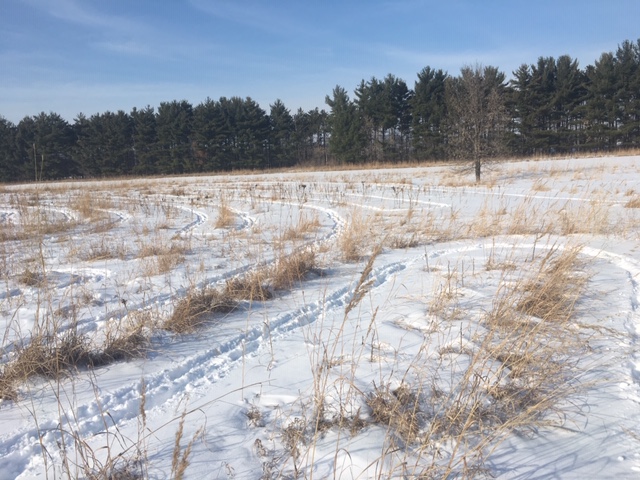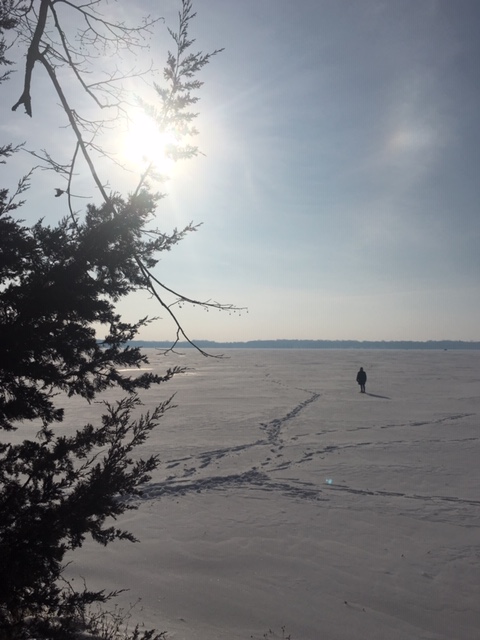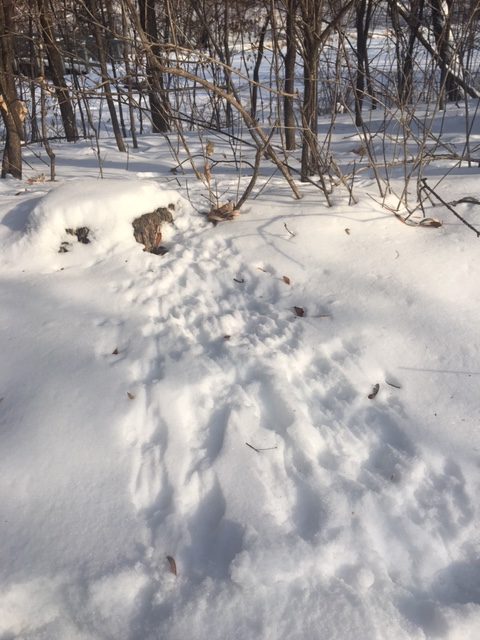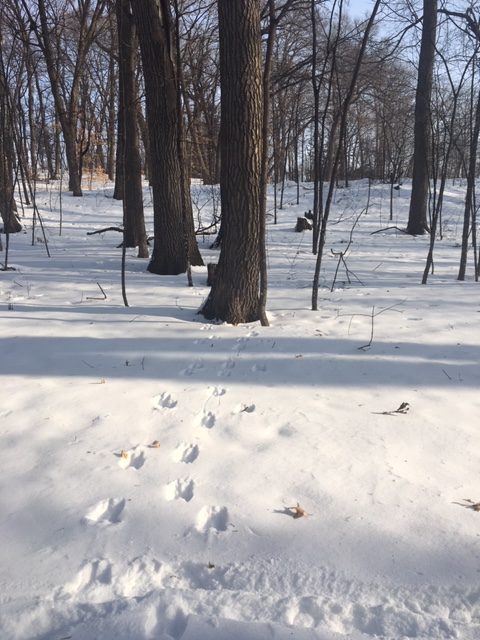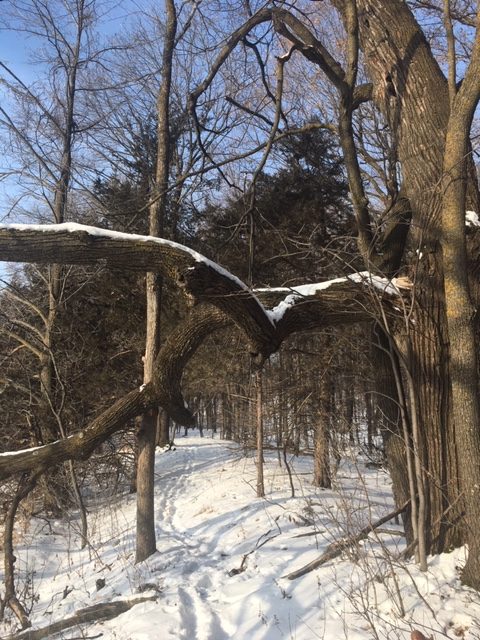
Finding Peace Through the Retreating Path
This past weekend I enjoyed a very moving and restorative retreat with a group of individuals—no longer strangers. Often, people, my husband included, ask me, “What do you do on retreat?” The time is best described as exploring the many paths life presents, with others, knowing this is your one journey. Like the snow in Minnesota, that’s pretty deep! I usually discover something profound about myself and my situation.
It was a time of contemplation within a time of contemplation for me as I currently deviate from the teacher path. This Courage and Renewal retreat brought me back to Parker Palmer’s words about a teacher’s “inner landscape”. I came home and was motivated to re-read The Courage to Teach. It is such an inspiring guide. If you are a teacher, struggling with the role or not, you must pick up that book.

I’m always enthralled by themed retreats and have been reflecting on the many years of retreating I have been involved and the effect of those times. Retreats are often themed. Fitting your “struggle” into a metaphor seems appropriate—helps contain that mess; carry it along or hold it out at arm’s length to better understand. My editor (husband and technical writer) would tell me I have too much metaphor here, but I will ask him and you to indulge me the symbolism. Maybe that’s a teacher thing. I know teachers will get it.
The theme this weekend was Winter Seeds of Darkness. A rich and beautiful metaphor very fitting of Parker Palmer’s work with and for teachers. I realize our lives can be viewed through this theme’s paradox: Winter-spring, light-dark, joy-struggle, dormant through re-birth. I’m looking for that “both/and” language for my own journey. It is necessary for teachers to be present to feel joy along with the struggle: joy AND struggle. Focusing on only the struggle does not help us nor the students and families we serve. I realized I may be guilty of that.
I have plenty of experience with the thing called “retreating.” I started attending my favorite retreat center in my early twenties—many years ago. The majestic St. Anthony’s Center, is now a full-on retreat center with many offerings to the spirit, secular and non-secular. It goes without saying that I was by far the youngest participant at many of these early retreats, though that never bothered me. I thought I might be on to something others had not yet discovered.
As a young person struggling to discover who I was and who I might endeavor to become, I felt the potential for peace in the air. This open and honest quality of the atmosphere I could not at the time identify. The pressure of the world was less compressing here than the air outside these grounds. As soon as I arrived, I could take a full and complete breath.
Belonging and total acceptance became the reason I made the pilgrimage north to be by myself, with people, in total silence. Being completely present for myself and for others can be hard to find in the real world, unfortunately. There is one of the paradoxes Palmer speaks of: to be made whole our equal and opposite needs for solitude and community must be met. Without both, he explains, we wither and die, literally, probably metaphorically too. Retreating from the community we can find solitude. Retreating to solitude we find community.
So, that is what I did there: found community and silence. I couldn’t help compare this community to that of my classroom—classrooms that I have been missing. Belonging that I have been missing.
Students come with the most open heart when they feel loved and belonging. Building this kind of community takes immense time and effort. It requires a teacher who has done this inner work that allows us to be completely present for a student; to view the needs with empathy and compassion. It is inconceivable to imagine success (aka achievement, productivity) without it.
The classrooms of my past that provided this kind of space were the most meaningful experiences of my life. I have seen many colleagues do this magical thing. But let’s face facts, the experiences in my classrooms and those that I have supported are not perfect environments. The parts of every day that fell short of this vision (yes, every day), were the exception that made the success apparent. There again is the paradox. How do we value the effort when we fell short as much as the connection when we succeeded? We are looking for leaders to add this value when we often can’t do it for ourselves nor each other.
Palmer describes this experience of paradox in his book, The Courage to Teach, and I wonder if this fits as an anecdote to the frustration I feel and see happening with my teacher colleagues. The pain he felt in seeing a class he taught unravel was not, in the end, a failure of what he should have been doing or failed to do. Wrongly attributing the low point to students (or schools, leaders, etc.–you fill in the blank) and their unwillingness to allow us to use all our gifts of teaching puts the failures on us. This further diminishes our capabilities and sense of hope. He says, “To become a better teacher, I must nurture a sense of self that both does and does not depend on the responses of others—and that is a true paradox.”
“Our goal is to create a beloved community and this will require a qualitative change in our souls as well as a quantitative change in our lives.”
–Martin Luther King, Jr.
I strived to provide that kind of community for my students and teachers; a community that holds both head and heart, facts and feelings, theory and practice. It is the only way. I came back to the real world wondering if I can attribute my failure to feel fulfilled to the climate of education now AND accept it as a flip side of what I know I can do—my sense of self. Joy in experiencing that selfhood that is still alive and wanting and needing to be fulfilled is evidence of its existence.
My fellow retreaters held this desire to be fulfilled too and are suffering in many ways. It is painful to see what is happening right now in our country and the world; to have that as the backdrop to our own personal situations can really bring us down. It is suffering that is universal and will only be healed through a universal understanding. We hold this struggle in the same way we hold joy—knowing the possibility of each.
So, I found solace retreating this weekend. Especially in my knowledge of what community can do for my soul. I can see a path to continue my journey in education.
When I reviewed the winter scenes I captured on my iPhone, the path our beloved community lays out for us is so clear and apparent. Do you see the various paths and directions here? We have choices: the comfort of stepping carefully within the existing footfalls or the uncertainty of untrampled terrain. Surely you see the metaphor of a journey. Whatever path you choose, let it be in the company of others. Let it be with a beloved community.
I hope you find a place to think, explore, and reflect for yourself.
Take time to listen. What direction are you called by your inner voice? What presence and true empathy can you provide others along the path of understanding?
**Feature photo (Labyrinth in the Sunrise Glow) credit to fellow retreat participant: Sharon Wichman. You can find her work at https://sharonwichman.smugmug.com


